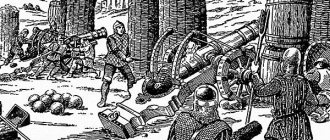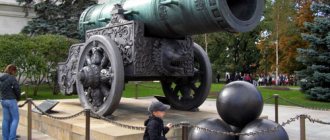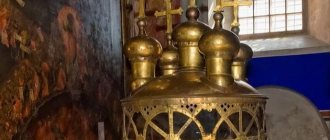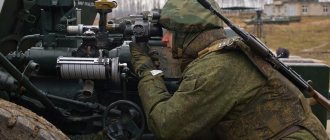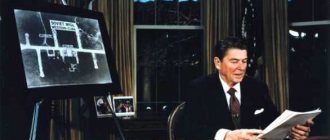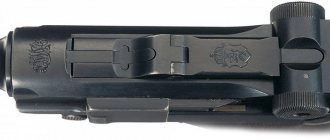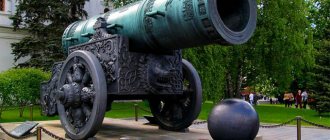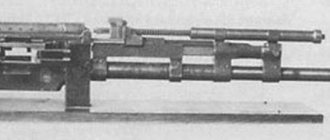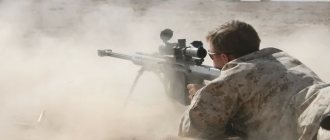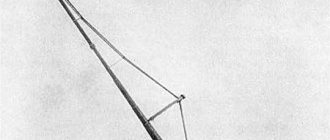What do the Tsar Bell and the Tsar Cannon have in common?
The Tsar Bell and the Tsar Cannon are monuments of Russian foundry art of the 18th century. With their appearance they remind of the time when craftsmen with golden hands and great talent lived in Rus'.
- Both monuments are impressive with their size and beautiful relief decorations on the surface.
- They stand side by side - near the church-bell tower of Ivan the Great on Cathedral Square of the Kremlin. The cannon is placed at the belfry from the north. The bell stands on a stone pedestal opposite.
- It is believed that the Tsar Bell never rang, and the Tsar Cannon never fired. But this is only partly true.
- The creation of masterpieces was initiated by one person - Boris Godunov, brother-in-law of Tsar Fyodor Ivanovich and the first Russian Tsar from the Godunov dynasty. It is true that the first Tsar Bell broke in a fire. It was recast more than once, using metal from previous bells.
The Tsar Bell and the Tsar Cannon are the most impressive sights of the Kremlin Palace. Many come to Moscow only to admire them.
Interesting Facts
It is believed that the weapon was created for the defense of the Kremlin, but modern researchers claim that the Tsar Cannon would not have coped with the mission assigned to it. Due to its dimensions and design features, it is only suitable for destroying thick fortress walls.
According to historian Alexei Lobin, by its design the Tsar Cannon is not a cannon at all, but a bombard. What does the barrel length indicate - 3.4 calibers, which is the standard ratio for bombards of that time, while a classic gun usually has a barrel length exceeding 40 calibers.
Hollow cast-iron cannonballs, cast in 1835, are stacked in front of the cannon. Each shell weighs almost two tons. True, the cannon is not capable of firing such cannonballs - due to their enormous weight, the cannon would most likely simply explode. Therefore, they have an exclusively decorative function. According to experts' calculations, the cannon could fire stone cannonballs weighing no more than 1 ton or buckshot.
The Tsar Cannon as a symbol of military power
Interesting fact. The Tsar Cannon was included in the Guinness Book of Records as the largest caliber cannon. Experts calculated that it could shoot stone cannonballs weighing up to 1 ton!
By the way, the kernels located next to it are decorative. The Tsar Cannon has unique dimensions:
- trunk diameter outside – 120 cm;
- patterned belt near the barrel - 134 cm;
- caliber – 890 mm.
For this reason, it cannot be classified as a specific class of weapon. Today a cannon would be considered a mortar. But according to the classifications of that time, structurally it was a shotgun.
Like the Tsar Bell, the Tsar Cannon is decorated with patterns and images. On the front of the trunk you can see the figure of Tsar Fyodor Ivanovich on a horse. There are inscriptions on it - messages for the Russian people. Including the name of the craftsman who made the Tsar Cannon. This is Andrey Chokhov.
Story
The Tsar Cannon itself was made more than 400 years ago - in 1586, and the support for it and the cannonball was made much later (only in 1859). Brief history of the Tsar Cannon:
- Boris Godunov prompted Tsar Fyodor Ivanovich to cast a gun from bronze of “royal” size. The cannon was supposed to symbolize the power of Russia and add grandeur to the platform for royal decrees.
- Andrei Chokhov cast the cannon by order of the Tsar. It was placed on Red Square next to Lobnoye Mesto. From the outside it looked as if she was protecting the Intercession Cathedral and the Spassky Gate.
- The Tsar Cannon was moved many times: first to the Arsenal courtyard, then to the gate, then to the old building of the Armory Chamber. Finally, in 1960, it was transported to where it stands today - to the church-bell tower of Ivan the Great. It took 200 horses to move the cannon.
- During the occupation of Moscow by the French army in 1812, the courtyard where the cannon stood was blown up. Fortunately, she was not injured. Only the wooden support, the carriage, burned down.
- In 1835, a new, intricate cast-iron carriage was forged for the cannon with the ornamentation that can be seen today. It was covered with bronze paint.
Scientists still argue to this day whether the Tsar Cannon fired at least once? Some experts claim that the gun did fire one shot. Others insist that this is impossible, since the weapon is not finished (the seed hole is not drilled). Only one thing is known for sure. At least once the Tsar Cannon was prepared for battle. In 1591, along with other artillery, it was installed in Kitai-gorod for protection against the troops of Kazy-Girey.
Tsar Bell and Tsar Cannon
The Tsar Cannon has three copies. The first two are very similar to the original. They were made of cast iron in 2001 in Izhevsk. One copy was installed at the entrance to the city, the second was donated to Donetsk. The third copy stands on the square in Yoshkar-Ola. It is half the size of the Kremlin cannon, made of steel, and the pattern on it is simple.
Design features
The weapon, according to the conclusion of the historian, A.N. The lobina, according to the type of barrel, is a bombard. This type of weapon allows us to classify the ratio of caliber to barrel length as 3.4. For a classic gun, the length should correspond to 40 calibers or more. However, it was also different from the traditional bombard.
Distinctive features:
Read also: CONSCIENCE - what is it. What means
- narrow, in relation to these dimensions, charging chamber 440X1740 mm;
- trunk diameter at the base is 890 mm;
- diameter at the muzzle 920 mm.
The data is typical for powerful siege artillery weapons. However, transporting it on hikes, given its weight and size, is very problematic, without cranes and tractors.
To fire a shot, shotguns of this size took a whole day to load. Using a weapon with such characteristics for defensive purposes was most appropriate. In this case, they did not need to be transported anywhere.
Thunderous Tsar Bell
The Tsar Bell is a real giant. Just one human-sized fragment of it is worth something! Its height is 6.2 m and its diameter is 6.6 m. It weighs almost 202 tons. One can only imagine what it might have sounded like.
Interestingly, several decades ago it was possible to get inside through the hole. These days the opening is covered with mesh. On the bell you can see beautiful patterns and images that tell its story. It contains images of Empress Anna Ioannovna, Tsar Alexei Mikhailovich, as well as Jesus, the Apostle Peter and other biblical characters.
Interesting fact. The Tsar Bell spent about 100 years in the ground. After the fire in 1737, it could not be raised for a long time.
It was taken out of the pit in which it was cast only in 1836, and it was never repaired. The ringing of the Tsar Bell would be so loud that it would cause panic among people and animals. Since its rise, the bell has stood on a pedestal and is one of the main attractions of Russia.
Development of artillery in Russia
The cannon appeared in the 14th century, when gunpowder was invented. The first firearms were characterized by imperfect design due to low technical capabilities. The cannons had iron barrels. The gunpowder was a dark paste, and the cartridge looked like a container with a handle; it was fixed in the barrel using wedges. The cartridges often exploded when fired, seriously injuring nearby people with shrapnel if they did not have time to hide.
In the 15th century, gunpowder began to look like a free-flowing substance. It was poured into the trunk through the barrel and carefully compacted. The cannonball, previously wrapped in rags, was pushed into the cannon until it came into contact with gunpowder. As artillery production technology developed, the caliber increased.
Weapons of significant caliber, used to destroy fortress walls, were called “bombards”. This name also applies to the Tsar Cannon.
In Russia, the era of artillery began in the 16th century. At the beginning of the 18th century, there were as many as 9,500 artillerymen. Guns began to be cast using a mold consisting of 12 elements, or having a longitudinal split. The gun was molded in a horizontal position. The molding blank was wooden, intended for repeated use. Factories were erected where weapons were cast, and buildings where gunpowder was made and stored.
Mention in historical sources
The Tsar Cannon is described in detail and picturesquely by the Polish-Lithuanian hussar Samuil Matskevich. Being a man of the noble family, he visited Moscow in 1610 together with the Polish hetman and diplomat Alexander Gonsevsky. What amazed him most in the Kremlin was the Tsar Cannon.
In his notes, Matskevich said that the Kremlin was completely built up with houses of boyars, churches, and monasteries. There were four gates: some were directed towards the Moscow River, others towards Ivangorod. The Frolov Gate was decorated with the capital's coat of arms - “an eagle on a ball,” as the nobleman wrote. The Kremlin is separated from China Town by a high and impressive wall, as well as a deep moat with stone decoration. On these walls and towers there were innumerable quantities of artillery and siege weapons.
Matskevich further describes the Tsar Cannon: “In the middle of the market I saw a mortar, cast, it seems, only for display. Having sat in it, I couldn’t reach the upper side of the canal with my head by an inch. And our hussars usually climbed into this gun, three at a time, and played cards there under the fuse, which served as their window.”
Legend
There is a legend that the Tsar Cannon once fired one shot. This happened in 1606 . On May 27, False Dmitry I was brutally killed. The body was buried, but the next day it lay next to the almshouse. Once again the impostor was buried deeper in another cemetery.
A week later, False Dmitry again “got out” of the grave. People began to whisper about evil spirits. They decided to burn the corpse. The Tsar Cannon was loaded with ashes and gunpowder. They fired in the direction of the Polish-Lithuanian Commonwealth, where the usurper came from.
History of attractions for children in grades 1-2
By order of the sovereign, the master of the Cannon Yard in Moscow, Andrei Chokhov, cast in 1586 the Tsar Cannon , which was larger in size than all existing ones. They placed it on the ground near the Execution Ground to cover the Spassky Gate. After 40 years, it was installed on a manufactured log frame filled with earth. After another 10 years, they replaced it with a stone roll.
Gun dimensions:
The parameters are impressive even for our time. Using such a weapon on campaigns required a lot of labor and effort. When delivering the gun from the cannon yard to the installation site, many people and 200 horses were involved.
Reasons for casting the Tsar Cannon
After the reign of Ivan the Terrible, who annexed Siberia, Astrakhan and the lands of Lithuania to Russia, which opened access to the Baltic Sea. The state has significantly increased the number of enemy countries, with which by the end of the 16th century. signed dubious peace treaties that resembled a respite.
During the reign of Ivan IV the Terrible, the Muscovite kingdom waged wars with the Crimean Khanate and European countries:
After the reign of a strong tsar, his weak son Fyodor Ivanovich, nicknamed the Blessed, did not appear to the people as a defender of the fatherland. Moreover, Russia, which was at war with the Crimean Khanate, was often subjected to Tatar raids.
Manufacturing
By decree of the Tsar, a cannon for hanging buckshot was made at the Moscow Cannon Yard, which was superior in caliber to all others.
The idea of creation came from Boris Godunov, who was the brother-in-law of the Tsar and had significant power in the state. They poured it in a furnace with high melting technology, for those times, which made it possible to heat tens of tons of metal and cast a weapon of similar size.
Rearrangements
The Tsar Cannon (the story briefly tells about its rearrangements) moved around the Kremlin with the participation of a large number of people and 200 horses, which pulled it, rolling it over logs. The second time, in this way, it was rearranged in the 18th century, in connection with the construction of the Arsenal in the Kremlin and the installation of a cannon in its courtyard with other guns.
During the Patriotic War with the French, in 1812, Napoleon, retreating from Moscow, ordered the Arsenal to be blown up. As a result, the guns of most of the Arsenal were damaged and the gun carriages were burned. The Arsenal was restored in 1817, and the Tsar Cannon was placed at the gate. Two years have passed. The architect Henri Montferrand had the idea to erect a memorial composition dedicated to the historical victory of Russia in the War of 1812.
The project implied the location of the Tsar Cannon and another large-caliber weapon, the Unicorn, near the entrance to the Arsenal.
They were to be installed on wooden carriages, painted green, with black wrought iron decorations. The approved project was not implemented.
The idea to install a cannon at the main gate of the Arsenal was realized in 1835. By that time, a cast iron carriage, decorated with bas-reliefs to match the barrel, and painted in bronze color, was ready in St. Petersburg. Along with it, 4 cores were added to the composition, weighing 1970 kg each. The cannon has been preserved in this form to this day.
Eight years later, in 1843, the cannon was moved to the Armory. Where it stood until 1960, when the building in which the barracks were then located was demolished to free up the territory for the construction of the Palace of Congresses. The gun was then installed on the north side of the Ivan the Great Bell Tower, where it stands now.
Tsar Cannon today
Now it is exhibited as a commemorative composition of Russian artillery and foundry, symbolizing the power of the state and a strong army.
The trunk is decorated
The barrel is decorated with elegant ornaments, giving the Russian shotgun artistic value. In the front, muzzle part on the right, Tsar Fyodor Ivanovich is depicted wearing a crown, on a horse, with a scepter. At the top is an inscription containing a complete listing of the king's titles.
On the middle part, on the right, is the order to create a cannon, where the name of the queen, Grand Duchess Irina, is mentioned. On the left is information about the place of manufacture and the date indicated in the Old Slavonic style, from the creation of the world, “….year 7094...”, with the name of the foundry worker.
Leave your comment
Chinese University Enrolls Artificial Intelligence in Computer Science Faculty
Reading time: 1 minute
For schools with a modular schedule, holidays in the new academic year will be shortened by a week
Reading time: 2 minutes
Rosobrnadzor: almost half of teachers do not reach the basic level of training
Reading time: 2 minutes
Reading time: 1 minute
Interfaculty technology parks will appear in pedagogical universities
Reading time: 3 minutes
An Italian teacher gave children a summer assignment and became famous
Reading time: 4 minutes
Gift certificates
Responsibility for resolving any controversial issues regarding the materials themselves and their contents is taken by the users who posted the material on the site. However, the site administration is ready to provide all possible support in resolving any issues related to the work and content of the site. If you notice that materials are being used illegally on this site, please notify the site administration using the feedback form.
All materials posted on the site were created by the authors of the site or posted by users of the site and are presented on the site for informational purposes only. Copyrights for materials belong to their legal authors. Partial or complete copying of site materials without written permission from the site administration is prohibited! The opinion of the administration may not coincide with the point of view of the authors.
Source

